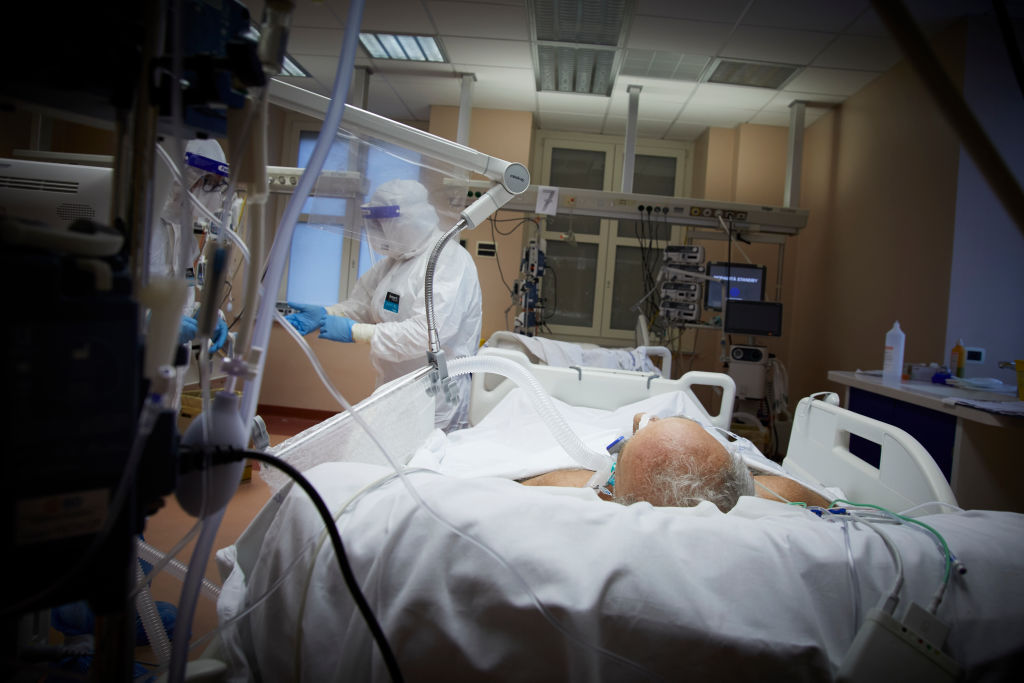COVID-19 Damage to Respiratory System Can Lead to Deadly Bacterial Infections

ADF STAFF
Recent research suggests that COVID-19’s impact on the respiratory system can open the way for potentially deadly bacterial infections.
These infections occur because COVID-19 harms the cells lining the airways and lungs that are typically the body’s first line of defense.
“This reduction means fewer immune cells report to the viral infection site, giving bacteria an opening to launch another infection,” researcher Hayley Muendlein of Tufts university wrote recently in The Conversation.
In that way, COVID-19 is similar to the global flu pandemic of 1918 as well as more recent flu epidemics, researchers say.
In many cases, bacteria, such as those that cause pneumonia, are already present in the respiratory system. Along with fungi and other pathogens, they are held in check by the body’s existing defenses inside the respiratory tract until COVID-19 comes along.
In some cases, bacterial infections happen at the same time as COVID-19, which researchers refer to as co-infection. More commonly, infections happen after a patient has been admitted to the hospital and treated for COVID-19 — a situation known as a superinfection.
When bacterial infections combine with COVID-19, they result in both more severe COVID-19 and worse patient outcomes than the coronavirus alone, according to Charles Feldman, a professor of pulmonology at the University of Witwatersrand in South Africa.
Understanding the interaction between bacteria and viruses during infections is critical to treating patients properly and for managing future pandemics, according to Muendlein.
“How viral and bacterial infections interact with each other increases the potential harm they can cause,” she wrote in The Conversation.
A study published in 2021 in the journal PLOS One found that up to 24% of people hospitalized with COVID-19 had a bacterial infection. Compared to patients with COVID-19 only, patients with bacterial infections were hospitalized for twice as long and were four times more likely to end up on a ventilator. They also had three times the likelihood of dying.
In countries such as South Africa, with high rates of tuberculosis, the interaction of TB and COVID-19 can make the pandemic’s impact worse, according to researchers.
“Not only were patients with active or latent TB more susceptible, but the symptom progress of the COVID infection was more rapid and more severe,” Feldman wrote in a study published in the journal Pneumonia.
Feldman and other researchers recommend starting COVID-19 patients on antibiotic treatments as soon as they enter the hospital to get a jump on any bacterial infection. If tests show there is no bacterial infection, the treatment should stop to avoid contributing to antibiotic resistance, Feldman wrote.
That’s because antibiotics do not treat viral infections such as COVID-19. In the case of a dual bacterial-viral infection, antibiotics eliminate the bacterial side so doctors can focus on treating the viral side.
Feldman notes that the key to avoiding bacterial infections during COVID-19 is virtually identical to the recommendations for preventing the spread of the COVID-19 itself:
“…[S]ocial distancing with limitations of contact between people, the wearing of facemasks and the recommendations on regular hand washing, as well as the isolation of infected cases with subsequent careful sterilization of their environment.”

Comments are closed.